
Flightless birds comprise a unique and diverse group of avian species that have adapted to live and thrive without the ability to fly. This evolutionary trait has emerged independently across various lineages, resulting in some of the world’s most peculiar birds that capture our imagination.
So, how and why did some remarkable birds lose their power of flight? What sets them apart anatomically from other birds? Which are the major flightless species around the globe? How do these unique adaptations help them survive, and what threats do they face today? This article explores the mysteries of Earth’s incredible flightless birds.
Table of Contents
- When Birds Stay Grounded: Reasons for Losing Flight
- Unique Adaptations: Anatomy of Flightless Birds
- Top Flightless Birds
- 1. Ostrich
- 2. Emu
- 3. Cassowary
- 4. Kiwi
- 5. Rhea
- 6. Kakapo
- 7. Inaccessible Island Rail
- 8. Okinawa Rail
- 9. Lord Howe Woodhen
- 10. Samoa Moorhen
- 11. Galapagos Rail
- 12. Buff-banded Rail
- 13. Weka
- 15. Takahe
- 16. Flightless Cormorant
- 17. Falkland Islands Steamer Duck
- 18. Campbell Island Teal
- 19. Auckland Islands Teal
- 20. South Island Takahe
- 21. Subantarctic Snipe
- 22. Chatham Island Snipe
- Extinct Flightless Birds
- 1. Dodo (†Raphus cucullatus)
- 2. Moa (†Dinornithiformes)
- 3. Great Auk (†Pinguinus impennis)
- 4. Elephant Bird (†Aepyornis maximus)
- 5. Rodrigues Solitaire (†Pezophaps solitaria)
- 6. New Zealand Quail (†Coturnix novaezealandiae)
- 7. Lyall’s Wren (†Traversia lyalli)
- 8. Chatham Islands Rail (†)
- 9. New Zealand Bushwren (†Xenicus longipes)
- 10. Ascension Flightless Crake (†Mundia elpenor)
- 11. Norfolk Island Kaka (†Nestor productus)
- 12. Viti Levu Rail (†Vitirallus watlingi)
- Why Do Flightless Birds Matter?
- Threats and Conservation Challenges
- Frequently Asked Questions
- What are the Emperor Penguin and Common Ostrich known for in the list of flightless birds?
- How many species of flightless birds are there?
- Can you mention eight birds from the flightless bird species?
- Why can’t these bird species fly?
- What are some of the main predators of flightless birds?
- Can you explain the significance of powerful legs in large flightless birds like the Common Ostrich?
- Which bird is the heaviest among the species of flightless birds?
- How many families of flightless birds are there?
- How are Galapagos Penguins unique in the list of flightless birds?
- Conclusion
When Birds Stay Grounded: Reasons for Losing Flight
Flight has been integral to the success of modern birds, which evolved from feathered dinosaurs over 150 million years ago. But over time, some birds have lost the need or capacity for aerial movement and maneuvering by modifying their wings, feathers, and bone structures in exchange for advantages in their terrestrial environments.
There were 3 key evolutionary drivers behind this transition to a grounded, flightless existence:
- Lack of aerial predators: In isolated island habitats like New Zealand and Madagascar, with no predatory Mammals or Reptiles, the need for flight diminished as an anti-predator adaptation. This allowed birds like kiwis and elephant birds to lose flight abilities later.
- Abundant resources: On remote islands and continents where ecological niches were unfilled, flightless birds evolved to occupy those spaces and use plentiful food sources close to the ground. This combination facilitated giant size in moas and elephant birds.
- Extreme environments: In harsh polar climates, evolving larger bodies with dense insulating feathers made more sense for penguins than expending Energy trying to fly, shaping their unique appearance today.
These three evolutionary pathways intersected for species like ostras, rheas, cassowaries, Kiwis, and penguins, resulting in the varied flightless species currently alive. Let’s explore some of their distinctive traits next.
Unique Adaptations: Anatomy of Flightless Birds

Losing the capacity for flight has driven some remarkable anatomical changes that vary across flightless species depending on their Ecology. Some distinct adaptations include:
- Small or non-existent wings are used mainly for display, balance, and steering while running. For example, ostrich wings are small but very strong to assist in maneuvers.
- Reduced keel on the sternum, which in flying birds anchors large wing muscles. Without this need, the keel is much smaller.
- Modified wing feathers are often hair-like and visually different from aerial birds, while other feathers create insulation. Penguin feathers are highly specialized to retain heat and repel water.
- Leg and muscle modifications allow some flightless birds to run extremely fast, like ostriches, reaching 43 miles per hour. Kiwis have strong legs for digging, while penguins ‘fly’ underwater.
- Lighter skeletons minimize weight, such as the Kiwi’s backbone being worked into its rib cage. At the same time, penguins have dense, heavy bones to assist diving.
- Large size from abundant food reduces predation, as seen in the 9-foot tall, 400-pound moas of New Zealand (now extinct).
Their grounded locomotion traded flight for specialized running and movement adaptations to suit their ecology.
Ostrich Anatomy
The Ostrich is an iconic African flightless bird and the largest living species today. Key features include:

- Size Up to 9 feet tall and over 300 pounds. Males have black and white plumage, while females are gray-brown.
- Speed Top running speed of just over 43 mph, covering 16 feet in a single stride!
- Eyes Their eyes, with a 2-inch diameter, are the largest of any land animal. Excellent vision aids their running.
- Wings Small, strong wings act as rudders to change direction rapidly while running.
- Legs Powerful long legs have adapted for high-speed, sustained running.
- Feet Two-toed feet give them exceptional balance and turning capability at speed.
Ostriches are well adapted to living in open grasslands and savannas. They utilize their running skills to escape the few predators that can catch them, like lions and hyenas.
Interestingly, ostriches have very small brains relative to their large bodies – just 0.02% of their weight! However, their specialized ecology minimizes the need for complex intelligence.
In the breeding season, male ostriches develop brilliant black and white plumage and can defend their mating territory aggressively. Females lay over a dozen eggs in a communal nest on the ground, sometimes sharing parenting duties with other females.
Anatomy of Penguins
Penguins form a highly specialized group of flightless seabirds, adapted for life in freezing southern waters but coming ashore to breed and molt. The largest penguin species is the Emperor Penguin, which relies on the Antarctic Sea ice to survive. Amazing anatomical features include:

- Streamlined shape to move swiftly underwater by ‘flying’, including rigid feathered wings providing propulsion. Their solid bones add weight to help them dive.
- Waterproof feathers with a thick down coat and outer layer keep them dry, warm, and insulated, even in icy waters below zero degrees Celsius.
- Powerful flippers propel them at swimming speeds of up to 22 mph and ‘fly’ above the surface.
- Rapid metabolism A high density of capillaries under their skin allows retaining metabolic heat.
- Vision adaptations include flattening their cornea and increasing light sensitivity to hunt fish at dark ocean depths.
Emperor penguins can dive over 1,500 feet deep when hunting and huddle closely with thousands of others to conserve heat during brutal Antarctic winters. Their remarkable adaptations allow breeding on the sea ice during temperatures down to -60°C!
Now, let’s meet the fascinating major species.
Top Flightless Birds
The first five ratites in this list comprise the best-known flightless species, including large, charismatic birds that roam Africa and Australasia. They share a common ancestor from the supercontinent Gondwana before evolving independently on different continents.
1. Ostrich

| Animalia | Struthioniformes | Struthionidae | Struthio | Struthio camelus |
The Ostrich’s (Struthio camelus) inability to fly comes from special evolutionary paths among ratites, with different developmental mechanisms at play.
- Although ostrich embryonic wing growth matches flying birds, pointing to them diverging on the way to flightlessness, Genetic studies show ratite flightlessness, ostriches included, developed multiple separate times.
- Like an extremely efficient breathing system, their bodily and Physiological qualities uniquely adapt to flightless life.
- These factors highlight Ostrich’s distinct evolutionary history in the bird family tree.
2. Emu
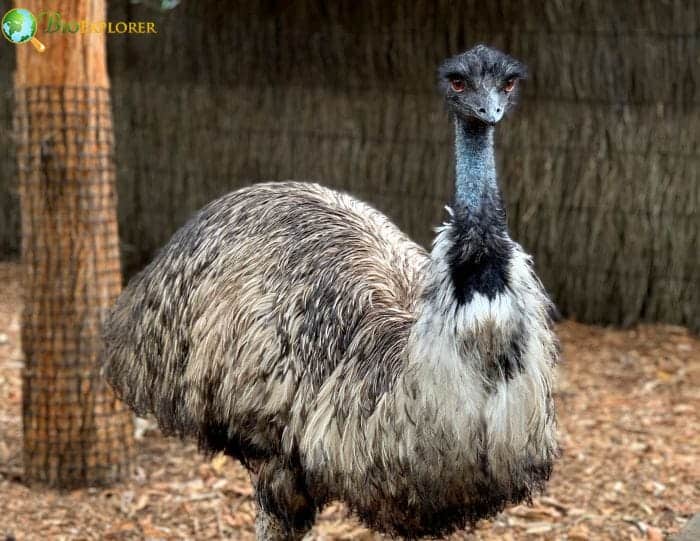
| Animalia | Casuariiformes | Dromaiidae | Dromaius | Dromaius novaehollandiae |
The Emu’s (Dromaius novaehollandiae) wings have eroded evolutionarily to mere remnants unsuitable for flight.
- This ground-dwelling existence traces altered gene expression patterns during embryonic growth, reshaping their wing formation particularly lower signaling by the pivotal fibroblast growth factor protein (Fgf10).
- Emus showcase attenuated activity in this crucial Fgf pathway directing forelimb development compared to flying relatives like Chickens.
- Weakened Fgf10 signaling induces lesser expansion of primordial cells destined to shape wings, leaving tiny flight-incapable flaps.
3. Cassowary
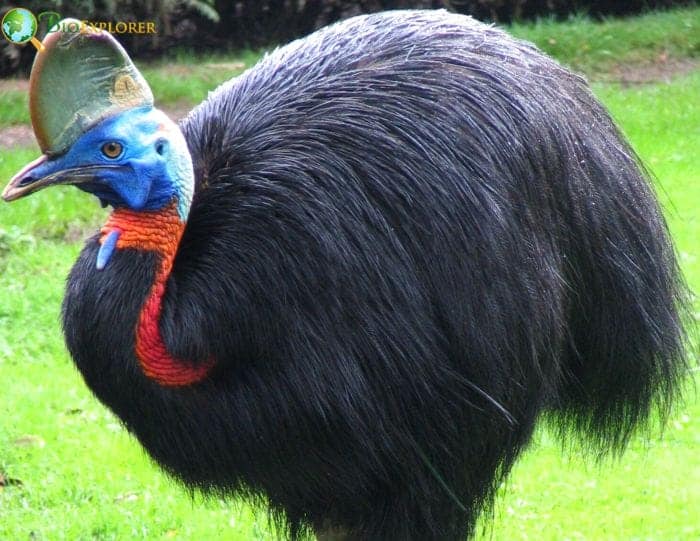
The Cassowary’s (Genus: Casuarius) flashy blue visage tops a flightless frame reaching towering heights. Though winged relatives soar overhead, this ratite ruler of New Guinea and northern Australian Rainforests prowls earthbound.
- Shared with ostriches, emus, and kiwis, the Cassowary’s grounded existence flows from evolutionary bargains trading flight feathers for formidable heft and speed.
- The research proposes their flightlessness sprouted multiple times independently an intricate convergence of habitat shifts and climate upheavals. The Cassowary’s wings slimmed while its legs bulked up, forging an ideal forest roamer.
- So, this Australian icon blazes through dense brushes adeptly on calloused feet, the wings once allowing its ancestors to take wing now shriveled to quirky quills.
- Cassowary’s story showcases flight capability pruned for newfound dominance, revealing adaptation’s creative license to expand ecological mastery.
Researchers conclude that molecular adjustments regulating limb-associated genes like Fgf underpin the regression in modern emus. Modified signaling during incubation thus clipped their wings, transforming embryos loaded with flying potential into juvenile, adult, and senior terrestrially-locked emu giants of Australia’s outback.
4. Kiwi
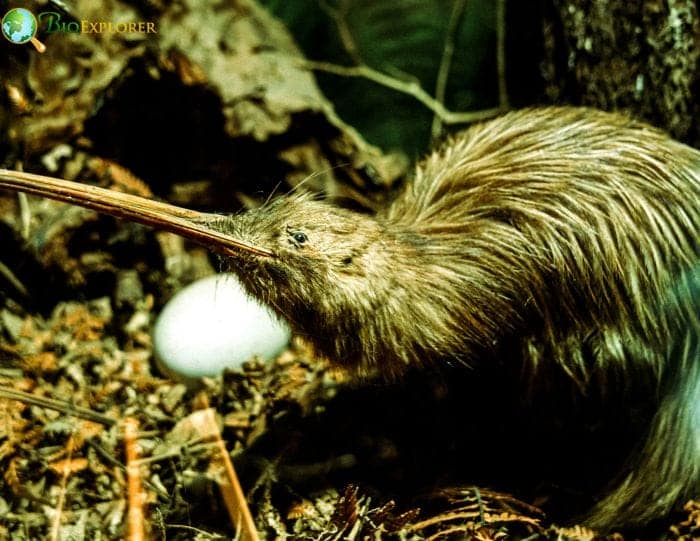
The Kiwi’s (Apteryx) flightless figure has sprouted from an intricate web of evolutionary adjustments to its nocturnal New Zealand niche.
- This ground-hugging bird of the night sports a toolkit tilted toward mammalian traits, with an excellent snout substituting for feeble eyesight.
- Kiwis’ enhanced sniffing capacity, highly unusual in birds, guides their dark meanderings rather than visual clarity. Reduced optical elements save metabolic exertion, sustaining round-the-clock visual sharpness.
- Scientists propose proto-kiwis once took wing as ancestors touched down in New Zealand. But with few mammal predators before human arrival, diminished flight muscles opened an ecological lane to walk while rivals soared.
- The modern Kiwi instead traverses the forest floor, probing leaf litter with its cat-like whiskers.
Anatomical, physiological, and behavioral adaptations entwined over time to help today’s Kiwi extract earthbound insects in the island’s dim light.
5. Rhea
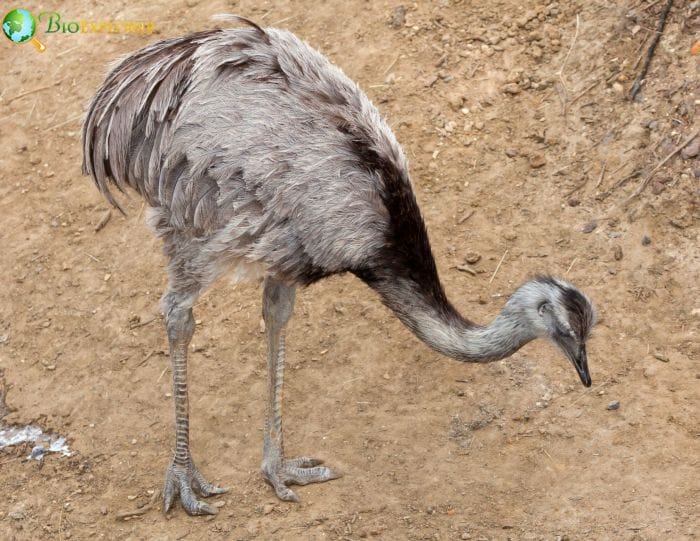
| Animalia | Rheiformes | Rheidae | Rhea | Struthio americanus |
The Rhea’s (Struthio americanus) wings stand frozen in time, but its legs race across South America’s plains. Studies detail the anatomical apparatus steering this ostrich cousin’s flightless fate.
- Evaluating greater rhea development exposes evolutionary tweaks prioritizing terrestrial speed. Ontogenetic leg expansion patterns outweighing proportional wing growth assist juvenile rheas in morphing into apt adult runners. Diagnosing bone density and muscular changes reaffirms the species’ sprinting specialization.
- Lesser rhea analyses also spotlight potential evolutionary impetuses for abandoning flight. As cousins took to the skies, grounded limbs and mass muscle reduction may have ensured this ratite’s survival.
- Through flight feathers molted came leg mastery gained. The modern Rhea’s physique exhibits lineage success, swapping wings for unrivaled running roaming ranges. Its outpaced Anatomy granted dominion across South America’s wide-open middle realm.
6. Kakapo

| Animalia | Psittaciformes | Strigopidae | Strigops | Strigops habroptilus |
The Kakapo (Strigops habroptilus) wears the crown as the planet’s sole flightless parrot, showcasing extraordinary evolutionary transformations tailoring its anatomy for grounded life.
- An ensemble of alterations to skeletal structure, muscles, and proportions diverges markedly from soaring relatives.
- A husky build, sexually uneven dimensions, and miniaturized wings for its genus signal bodily revisions for terrestrial living. Distinct modifications like a withered breastbone, elongated coracoid bone, and prominent humerus bump reflect incremental physical shifts from ancestral flyers into this rare flightless form.
- Kakapo pectoral muscles managing wing movements exhibit pronounced reduction consistent with flight ability abandonment. Such physiological and functional adaptations support a walk rather than a soar existence devoid of natural predators.
- Conserving these rare green parrots presents complex challenges, however. Supplying the Kakapo’s particular ecological needs risks unnaturally shifting sex ratios among chicks. Still, intensive management persists critical to ensure New Zealand forests resound with the squeaks of this quirky ground parrot for generations.
The Kakapo’s extraordinary evolutionary innovations highlight how species molded by isolation fill specialized niches – yet remain dependent on human protection.
The next flightless birds belong to the Rails, gallinules, and coots group. These display a remarkable tendency to evolve flightlessness, with numerous species adapting to terrestrial lifestyles on islands lacking predators. The repeated occurrence of grounded rail lineages illustrates the selective power isolation exerted in forging unusual anatomical experiments when birds transition ecological realms from air to land.
7. Inaccessible Island Rail
| Animalia | Gruiformes | Rallidae | Atlantisia | Atlantisia rogersi |
The unassuming Inaccessible Island Rail (Atlantisia rogersi), the smallest of Earth’s flightless feathered fauna, leads an evolutionary double life. Recent revelations reclassify the minuscule flightless rail as a secret South American emigrant that wandered winged far from home long ago.
- Genetic tests link the elusive six-inch inhabitant of Inaccessible Island within the “Laterallus Clade” a rail family with Andean ties residing halfway across the globe.
- This diminutive, downy castaway likely soared 1.5 million years and 4000 miles from its tropical origins towards remote isolation.
- Free from predators, with tasty arthropods aplenty, ancestral island colonizers eventually dispensed with needless wings, leaving modern rail relatives flight-capable on one continent and grounded on another.
- Such extreme adaptations spotlight rail birds’ extraordinary dispersal powers and ease in establishing evolutionary isolation laboratories.
So, this remote island runner hiding in South Atlantic tussocks survives living evidence that radical transformation springs from birds following unseen migratory launch pads to foster new island forms.
8. Okinawa Rail
| Animalia | Gruiformes | Rallidae | Gallirallus | Gallirallus okinawae |
The recently discovered Okinawa Rail (Gallirallus okinawae), grounded on its namesake isle, displays standard flightless traits without explicit scientific rationale.
- While genetic studies showcase healthy diversity boding well for conservation, they also point to narrowed heterogeneity, indicating concerns about bottlenecks from Habitat Loss and invading predators. This raises questions on potential human-caused influences nudging aerial abilities toward vestigiality.
- Broader genus examinations reveal extensive flightlessness permeating the rails’ family tree as island-dwelling frequently precipitated shedding wing functionality. Yet most research on Okinawa rails catalogs genetic markers and relationships, skirting insights into if or how modern disturbances affected the lineage’s aerial absence.
- Regardless of origins, preserving the Okinawa Rail’s diversity remains imperative for ensuring this Japanese jewel doesn’t join other extinct island rail varieties only discernable through Fossils.
Thus, despite undetermined reasons grounding Japanese rails, upholding their future flits in protective hands illustrates fragile bonds between flight forfeiture on islands and enduring survival.
9. Lord Howe Woodhen
| Animalia | Gruiformes | Rallidae | Hypotaenidia | Hypotaenidia sylvestris |
Lord Howe Woodhen (Hypotaenidia sylvestris) emerged from the shadows of Extinction through an improbable Eucalyptus-scented redemption, underscoring conservation’s prowess against ecological invaders.
- These Australian grounded fowl witnessed their forested bastion besieged by an introduced mob of cat, goat, and pig plunderers unleashing decimation across the island of Edén.
- As numbers nosedived to a trio of breeding pairs in the 1970s, an ambitious captive crusade incubated future flocks until extinction’s grip retreated.
- Over 4 years, the breeding battalion pumped out 76 chicks descended from the original woodhen patriarchs that braved the wilderness anew once their hatchling heritage hit critical mass and enemy raids ceased.
- Rodent removal augmented recovery prospects in 2019, hoping this species will continue recapturing its former strongholds. While flightless forms often fall fastest when foreign forces arrive, successful sanctuaries showcase compassion conquering harm across communities committed to restoration.
So, the woodhen’s resurrection tunes a triumphant environmental anthem – when invasive intruders pressure native biodiversity, rallying undaunted around Ecology’s plea can tip back fortune’s scales towards righteous equilibrium.
10. Samoa Moorhen
| Animalia | Gruiformes | Rallidae | Gallinula | Gallinula pacifica |
The resurfaced Samoa Moorhen (Gallinula pacifica) teeters amongst Earth’s critically imperiled winged dwellers, symbolizing the formidable threats confronting island fauna following human encroachment.
- While sparse scientific literature impedes definitive explanations behind this species’ distress, analogous island cases spotlight the pernicious patterns ravaging native biodiversity after invasive introductions.
- Fragile island ecosystems cultivated through isolation foster endemic lifeforms exquisitely honed to ecological niches and devoid of foreign countermeasures.
- The Samoa Moorhen and similar species thus endured unperturbed without the need to rapidly evolve safeguards against novel predators or habitat hydraulics.
- Hence, upon human arrival, exotic and technologically superior forces thrust local inhabitants towards annihilation thresholds by systematically destroying native forests, spreading alien competitors, and unleashing waves of exotic predators.
So, within the Samoa Moorhen’s scarcity rings an urgent plea for intensive conservation interventions, including habitat protections and control of harmful invasive populations before the species follows scores of other island victims into irreversible extinction.
When it comes to preserving our planet’s vulnerable and irreplaceable endemic organisms, procrastination portends terminal consequences.
11. Galapagos Rail
| Animalia | Gruiformes | Rallidae | Laterallus | Laterallus spilonotus |
The distinctive Galapagos Rail (Laterallus spilonotus) remains an emblem of resilient island endemics if invasive mobsters are ousted.
- Santiago Island spotlights rail revival following revolutionary mammal evictions their numbers rocketed tenfold when pigs and goats terminated their trampling tyranny. Such recoveries underscore that foreign fauna remains ready executioners despite adaptive prowess conquering these evolutionary outposts.
- In contrast, Isabela Island rails still endure population gauntlets with alien colonists trampling nests amidst the tangled scalesia forest while conservation lags. But Santiago’s salvation offers optimism with angels of invasive removal rising, native species soar anew.
- So, the rails’ resurgence signals that even on settled islands, recovery remains a reality through hands-on habitat healing and compassion bravely battling introduced threats.
The Galapagos Rail thus survives as the flagship for endemic species preservation through proactive protections banishing harmful transplants – for when invasive politics condemn natives, activist conservation offers redemption Roads towards recovery can still be carved if humankind resumes guardian role.
12. Buff-banded Rail
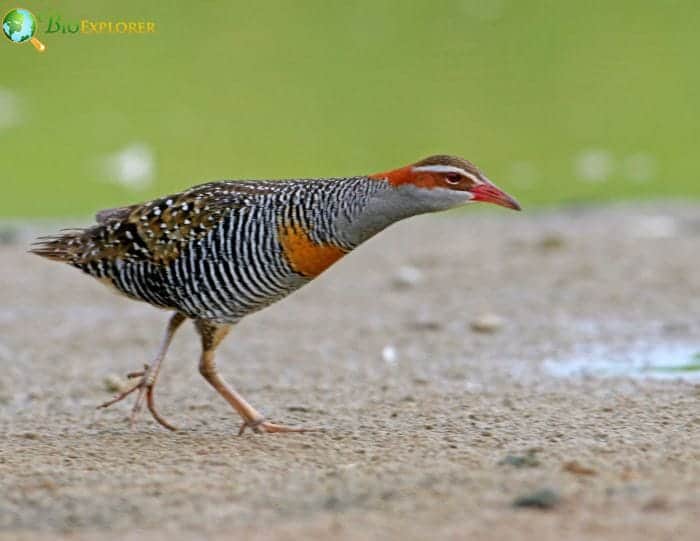
| Animalia | Gruiformes | Rallidae | Gallirallus | Gallirallus philippensis |
The prolific Buff-banded Rail (Gallirallus philippensis), prowling diverse Oceanic islands, harbors evolutionary insights within its widespread genome, illuminating flightless transformations. Genetic gradations reduced in variation with distance from ancestral Australian garrisons indicate evolutionary splintering.
- Sympatric rail descendants showcase rapid, recurrent adaptation in isolation laboratories with wings and flight muscles atrophying in multiple lineages. So, within the prolific archipelago, colonizer populations persist in evidence that island ecosystems forge selectively distinct, fast-forfeiting, flightless forms.
- Yet high genetic diversity sustaining Philippine strongholds implies robust ancestral source populations furnished the foundation permitting peripheral colonies to specialize locally. While molecular mechanisms driving the emergence of island flightlessness remain obscured, tracks left by colonizing rails highlight islands as potential evolutionary cauldrons isolation’s tinkering kindling wondrous creativity.
Thus, the rails’ continental conquest and island variation spotlight genus success, spurring repeated grounded offshoots, granting glimpses into initial genetic steps en route to exotic flightless lineages scattering Oceania and beyond.
13. Weka

| Animalia | Gruiformes | Rallidae | Gallirallus | Gallirallus australis |
The Weka (Gallirallus australis), a playful jewel of New Zealand, scampers flightless across Earth, not air – offering insights into the evolutionary pruning of wings.
- For this ground bird, aerial escape was unnecessary, with mammals absent.
- Yet while its muscles mirror airborne kin identically, ratites like the Ostrich and Emu followed distinct molecular paths to flightlessness. The Weka’s retained muscular machinery seems at odds with shedding flight’s burden.
- Still, foraging forests to snowgrass without flying flows as the Weka’s reward for relinquishing lift and embracing leggy locomotion.
Constantly on the move, this pesky picaret patrols diverse landscapes from mountain to shoreline, unfazed by terrestrial threats.
14. Madagascar Flufftail
| Animalia | Gruiformes | Rallidae | Sarothrura | Sarothrura insularis |
The concealed existence of the Madagascar Flufftail (Sarothrura insularis) mirrors the island’s secluded evolutionary history that molded its flightless form.
- While the dense rainforest understory offers slim scientific sightings, the native rail’s natural history hints at shed aviation-supporting shadowy dwellings.
- Unlike its localized slender-billed cousin, Flufftails flourish through much of the island’s endemic eastern wetlands, their wings clipped by isolated selection pressures.
- Burrowing terrestrial rather than aerial paths allows dominating rich yet confined ecosystems blanketed by predators.
- Trading lift and buoyant bones to maneuver bustling Forest Floors and tributaries offered an existential edge once oceans insulated Madagascar’s unique species. Now, human impacts shrink the Flufftail’s specialized habitat as much as the rails themselves.
- The Flufftail’s fate encapsulates the paradox of flightlessness abbreviated wings are an advantage until exposures require urgent escape, which is only possible through lengthy feathers inherited from high-flying ancestors.
Thus, the Flufftail’s camouflage remains a cautionary lesson on the perils of narrowed adaptation once conditions shift beyond evolutionary limits.
15. Takahe

| Animalia | Gruiformes | Rallidae | Porphyrio | Porphyrio hochstetteri |
The vibrant Takahe (Porphyrio hochstetteri) of New Zealand’s alpine grasslands roams flightlessly – a railbird grounded by evolutionary and ecological currents.
- As kindred rails from Norway to Hawaii shed flight’s burden in safe refuges, takahes abandoned their wings. They honed hiking legs to wander the isle highlands predator-free for eons.
- Yet while stubby wings allowed unrushed grazing, this transformation left takahes vulnerable when deadly invaders hit New Zealand sealing their fate without aerial escape.
- Skeletal shriveling of the humerus and keeled sternum reveal remnants from high-flying ancestry before isolation’s bargain for minimalist wings cost survival’s lynchpin.
- Today, just 300 Takahes linger through intensive conservation to atone for human impacts that ignored adaptations molded across geological isolation.
- Careful breeding and fierce protections aim to keep mainland transplants from joining eight other rail species stranded solely in science texts.
- The Takahe’s sparkling sapphire sheen remains dulled by the dangers of flight’s forgone freedom, illuminating fragile ecological balance.
16. Flightless Cormorant
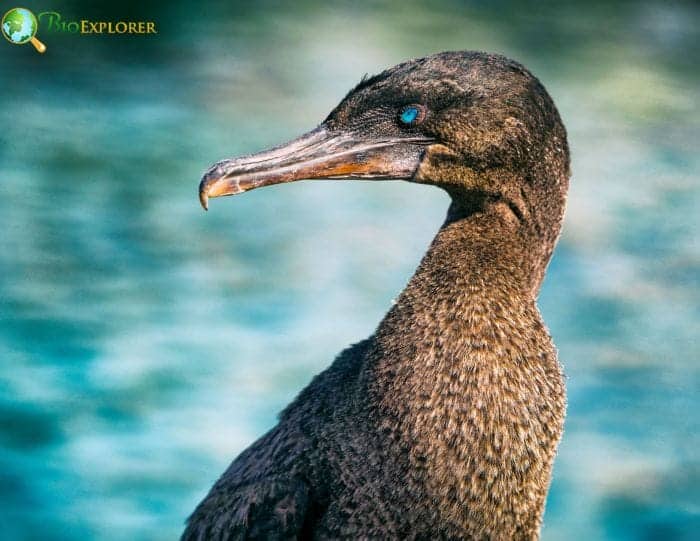
| Animalia | Suliformes | Phalacrocoracidae | Phalacrocorax | Phalacrocorax harrisi |
The Flightless Cormorant (Phalacrocorax harrisi), a lone non-flying member of its family, spotlights Galápagos’ marvels by sacrificing flight to plunge seabed spoils. genomicsWhat is genomics?Genomics is the study of genomes, the complete set of DNA in an organism, encompassing its structure, function, evolution, and mapping. unravels key mutations, degrading its wings for ocean victories.
- DNA analysis reveals tweaks in ciliary genes crimping feathered flexibility and skeletal shifts streamlining its frame for fishing-free dives down to silty abyssal plains. Each stroke propelling its torpedo silhouette through Algae forests underwrites the cormorant’s aerial absence.
- These molecular adjustments granting underwater dominance over aerial buoyancy build on the Flightless Cormorant’s ancestry founded when seafaring pioneers settled an archipelago devoid of land predators.
- As others outcompeted outsiders, vestigial wings evolved into oars conquering untapped bounties below the waves until humans introduced non-native threats above them.
- Within this unique Galápagos, denizen swims, a living testament to Evolution‘s creative license for task-targeted toolkits and the courage to forfeit skies for seas or vice versa when ecology allows enterprising Animals to thrive unbounded.
17. Falkland Islands Steamer Duck

| Animalia | Anseriformes | Anatidae | Tachyeres | Tachyeres brachypterus |
The sturdy-winged Falkland Islands Steamer Duck (Tachyeres brachypterus) floats as a scientific conundrum – genetically intertwined with airborne equivalents despite forfeiting flight for maritime mastery.
- Fresh revelations hint that steamer Ducks crossed land bridges to reach the Falklands and that some ancestors may have retained or re-evolved limited air mobility after arrival.
- These insights spark questions about fuzzy species definitions and complex evolutionary pathways intermixing flight-capable contour feathers with streamlined flippers.
- The steamer duck’s family tree reveals flight repeatedly pruned and possibly later partly restored in rebounding branches before final aerial loss as continental predators disappeared.
- And molecular evidence shows modern flying and flightless Falkland fowl are impossible to distinguish genetically their outward differences are intertwined DNA blueprints crafted over eons tracing back to Late Pleistocene migrations.
Within the steamer duck’s 170 million wings, beats logged across hemispheres swim living reminder that animal ancestry follows unpredictable navigational trajectories – sometimes even air to sea.
18. Campbell Island Teal

| Animalia | Anseriformes | Anatidae | Anas | Anas nesiotis |
The Campbell Island Teal (Anas nesiotis) has fled from the brink after near extinction in forbidding remote southern waters below New Zealand.
- This intrepid subantarctic duck belongs to its distinct ancestral line, which is clearly divergent from related regional teals.
- Mitochondrial DNA decisively sets Campbells apart, vindicating the unique species’ stature and recognizing subtle differences honed over millennia, confronting unruly headwinds.
- And while original ancestral sources remain uncertain, northern mainland or Auckland Island relatives most likely dispatched venturesome voyagers towards the Campbells.
- Those first discovered the islands’ turbulent climate that rewarded hunkering down, not flight.
- When human impacts shredded indigenous wildlife abundance, flightlessness became a liability until the eleventh-hour rescue reversed the Campbell Teal’s runway towards oblivion.
19. Auckland Islands Teal

| Animalia | Anseriformes | Anatidae | Anas | Anas aucklandica |
The Auckland Islands Teal (Anas aucklandica), an eccentric duck sequestered on an archipelago ringing New Zealand’s sub-Antarctic frontier, took an evolutionary gamble trading daylight foraging to exploit untapped nocturnal niches.
- Genetic tests confirm Auckland Teals share a common ancestor with two diminutive duck cousins before isolation’s opportunities hatched an unusual solution.
- With terrestrial threats absent, expanding into the darkness offered an open ecological edge to conquer without flying far. The Auckland Teal reconfigured its clock to capitalize on latent nighttime resources unlocked by forged foraging below bright moonbeams instead of sunlight.
- Such unique adaptations, crafted over millennia spent tucked away from external competition & predators, often arise when wildlife wanders into the splendid seclusion of islands afar.
- The Auckland Teal’s unusual blueprint attests to nature’s inventiveness unleashed in confined laboratories and the potential for biodiversity flourishing as species piece together customized toolkits fitting ecological puzzles.
Through one diminutive duck’s after-dark innovations shines glimpses of evolutionary possibilities hidden within the island’s splendid seclusion.
20. South Island Takahe

| Animalia | Gruiformes | Rallidae | Porphyrio | Porphyrio hochstetteri |
The dazzling South Island Takahe (Porphyrio hochstetteri), retrieved from presumed extinction in 1948, persists as a conservation emblem despite narrowed genetics chipping away viability.
- Isolated for a century with fewer than 300 remaining today, New Zealand’s azure-adorned flightless rail contends with inbreeding and diversity decay threatening existence.
- Genomic surveys spotlight Takahe’s decorated dilemma low variation indicating generations of partner fidelity now risks resilience.
- With small populations facing limited mate choice, managing captive and island flocks expands genetic horizons so future generations may continue wading mountain streams gloriously hued.
- Yet dicing populations slices bonds while Cloning diversity hopes that one complementary chromosome may reverse demise destiny.
So, within the Takahe’s sapphire sheen lies caution for all creatures confined to remnants by progress, serving as a muse for committing to radical recovery efforts before the closing refrain.
21. Subantarctic Snipe
| Animalia | Charadriiformes | Scolopacidae | Coenocorypha | Coenocorypha aucklandica |
The peculiar Subantarctic Snipe (Coenocorypha aucklandica), grounded across remote windswept New Zealand outliers, exhibits astonishing evolutionary tinkering tailored by seclusion.
- Morphing from airborne ancestors, this cryptic bird traded flight feather functionality to master isolated terrain liberated from predators.
- Fossil fragments hint such solitary islands kindle extraordinary genetic rewriting as animals adapt alternate tools to conquer constraints confronting colonizers.
- With wings trimmed for traction, reshaping skeletons and musculature for running, not soaring proves advantageous in habitats where aerial agility offers minimal edge.
- Yet what crystallizes in isolation remains fragile against foreign forces. So within the Snipe’s grounded soul echoes millions of years of selective pressure and a poignant reminder that with human encroachment now swelling, the tools secured through evolutionary experiments often falter upon first contact simplicity sacrificed.
Thus, there persists urgency for conservation interventions before remarkable species crafted over eons and then erased within years become the next ghostly cautionary tale.
22. Chatham Island Snipe
| Animalia | Charadriiformes | Scolopacidae | Coenocorypha | Coenocorypha pusilla |
The Chatham Island Snipe (Coenocorypha pusilla) exemplifies the remarkable process of island adaptation leading to flightlessness.
- A key aspect of understanding such adaptations involves examining the breeding systems, population dynamics, and conservation efforts for related species, such as the New Zealand Snipe (Coenocorypha aucklandica) and the Chatham Island Snipe.
- These species exhibit unique breeding systems that may be influenced by their insular environments, including food availability and the absence of predators.
- The study of their breeding systems suggests a high degree of monogamy and potential constraints on population growth due to limited food resources or other ecological factors.
- Additionally, conservation efforts, including captive breeding programs, have been considered to assist in recovering endangered snipe species, highlighting the importance of understanding their ecological and reproductive behaviors to inform conservation strategies.
Such efforts underscore the critical need for ongoing conservation initiatives to protect these unique island-adapted species from further threats and to prevent their extinction.
23. Penguin Species
Unlike the ratites, multiple penguin lineages independently evolved flightlessness as they diverged from flying ancestors. 27 Modern Penguin Species are adapted to marine life in the Southern Hemisphere.
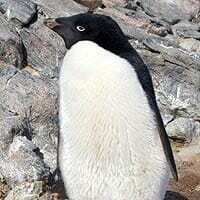
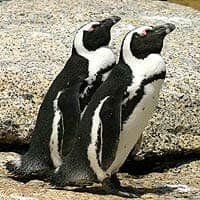
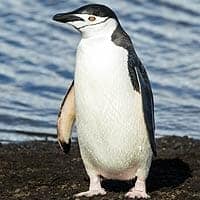
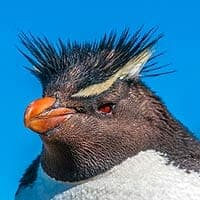
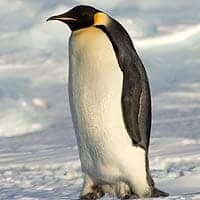
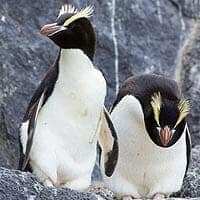
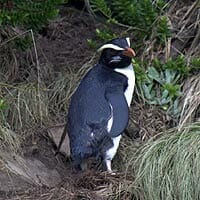
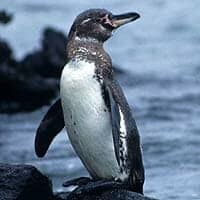
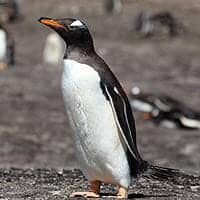
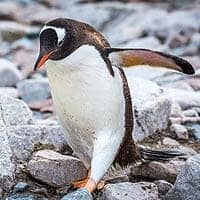
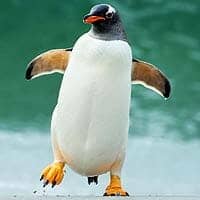
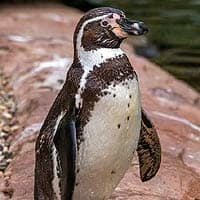
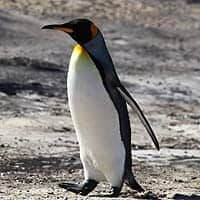
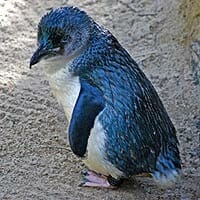
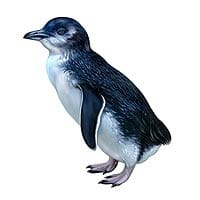
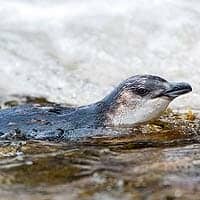
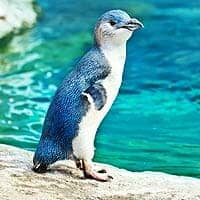
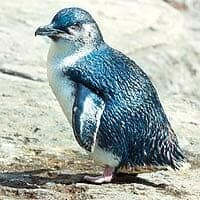
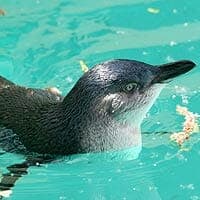
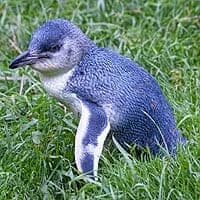
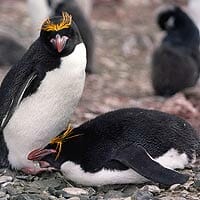
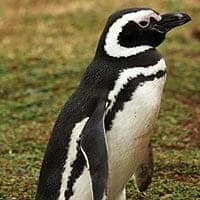
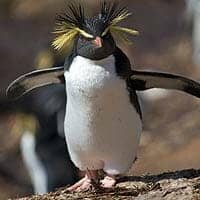
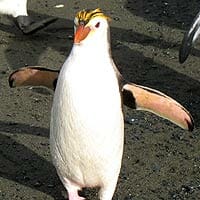
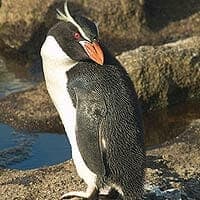
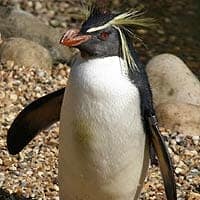

Extinct Flightless Birds
Let us explore flightless birds that are extinct now.

1. Dodo (†Raphus cucullatus)
| Animalia | Columbiformes | Columbidae | Raphus | Raphus cucullatus |
The tragic extinction of the Dodo (Raphus cucullatus) spelled the loss of a freakishly singular island oddity. Its vanished kind once waddled wingless across Mauritius before humans hastened the 17th-century demise of this ecological marvel.
- With predators absent, the hearty dodo family evolved flight muscles into withered relics during its island isolation. Grounded life allowed calm foraging forest fruits as continental cousins took to the skies.
- Yet with sailors came guns, pigs, Monkeys, rats and calamity for these 50-pound birds nearly two feet tall. Mainland migrants cleared timber, stole eggs, and attacked helpless chicks of this homely doddering bird bereft of fear or flight.
- Thus, a species that prevailed across eons was swiftly extinguished within decades, exterminated by human forces, transforming its protected paradise into a death trap. Though limited observations during its abrupt end, remnants and sketches spotlight the tragedy of catastrophically failed adaptation.
The Dodo passes into history, twinned with the sad lesson of annihilating nature’s unique creations.
2. Moa (†Dinornithiformes)
Mighty Moas (Dinornithiformes), towering icons dominating New Zealand’s ancestral forests, were rapidly erased by the first human footfalls on their isolated realm – spotlighting humanity’s catastrophic impacts outpacing megafauna that endured ice ages.
- Fresh forensic analysis indicates that within 150 years of Polynesian settlement, 11 diverse moa grazers tracking from turkey to ten feet tall were entirely extinguished through hunting and widespread habitat destruction.
- Population models reveal that even minimal pioneer bands as scarcely dotted as one person per 10 kilometers square still drove viable moa lineages beyond redemption in barely two lifetimes.
- By the time colonial expansion reached fever pitch, the moas had exited the mortal plane a heartbreaking testament to human overexploitation of naïve species already adapted to fill complete ecosystem niches.
- While moas ruled ranged resplendent over grass plains and winding wooded valleys for 60 million years, they proved no match for foreign forces wielding sophisticated exploitation tools.
Now, only echoes of their booming calls persist, underscoring the traumatic vulnerability of creatures that never coexisted with the most disruptive predator on our planet: humankind.
3. Great Auk (†Pinguinus impennis)
| Animalia | Charadriiformes | Alcidae | Pinguinus | Pinguinus impennis |
The Great Auk (Pinguinus impennis) owned the title “penguin of the north” before extinction erased these birds in the 1800s.
- Analysis of fossils reveals tweaks tailoring its figure to aquatic living mirrored modern penguin anatomy.
- Like penguin cousins, this vanished avian navigated oceans flightlessly after evolution-molded plunging prowess. Skeletal scrutiny spotlights compacted wings that propelled underwater maneuvers, sacrificing aerial buoyancy.
- Great auks and penguins share compact frames, displaying remarkable diving competence. Their blended fish-catching form proves flight’s unnecessary luxury for seabirds conquering frigid northern feeding grounds.
- However, the Great Auk’s survival instincts grew outdated as humans industrialized such northern coasts.
Flightlessness turned from an evolutionary asset into a liability once more mobile predators arrived. By 1844, the last Great Auk perished, leaving loner penguins championing the aquatic habitats of Earth’s highest latitudes.
4. Elephant Bird (†Aepyornis maximus)
The colossal Elephant Bird (Aepyornis maximus), towering 3 meters high, once strode Madagascar before vanishing.
- Fresh genetic appraisals reveal this giant ratite’s nearest kin the petite Kiwi. Such shocking connections challenge conventional thinking.
- Rather than flightlessness resulting from the split of bird ancestors across old Gondwana landmasses, analyses indicate aerial mobility paved the way to their eventual island isolation.
- After dispersing through ancient skies, descendants like the mighty elephant bird and mousy Kiwi independently evolved gigantism in their new terrain.
- Traditional theories of ratite distribution solely by continental drift now fade. Instead, ancestral colonists first flew and then forged separate flightless paths to fill vacant island niches.
- The elephant bird’s inflated frame maximized its role as Madagascar’s apex forager before humans tipped the scales.
In amigos, Kiwi, and elephant birds – science spots surprising evidence that occasionally, kinship takes wildly unexpected shapes between bird breeds across time and terrain.
5. Rodrigues Solitaire (†Pezophaps solitaria)
| Animalia | Columbiformes | Columbidae | Pezophaps | Pezophaps solitaria |
The Rodrigues Solitaire (Pezophaps solitaria), an extinct giant flightless pigeon closely related to the Dodo and native to Rodrigues Island in the Mascarene Islands, displayed unique behaviors associated with its flightlessness.
- The solitaire had a notable wing structure known as the ‘musket ball’ or carpal knob, which was used as a weapon in territorial combats by both sexes. This feature, unique among birds, formed after skeletal maturity and reached its greatest size in adult males.
- Such a structure indicates that despite their inability to fly, Rodrigues Solitaires engaged in physical confrontations to defend their territory, using their wings as clubs to produce audible signals during these encounters.
- The behaviors and adaptations of the Rodrigues Solitaire, particularly its use of the carpal knob in territorial disputes, underline the complex social and ecological roles these flightless birds played in their island ecosystem before their extinction in the mid-1700s.
This unique behavior, coupled with the physical adaptations of the Rodrigues Solitaire, provides a fascinating glimpse into the life of this extinct species and the evolutionary pathways that led to its distinct form of flightlessness and territorial behavior.
6. New Zealand Quail (†Coturnix novaezealandiae)
| Coturnix novaezealandiae |
New Zealand once reverberated with the calls of the native koreke; a lost quail (Coturnix novaezealandiae) vanished for 150 years with origins obscured until DNA analysis reestablished its identity from history’s haze.
- Genetic detectives finally discerned the enigmatic bird from Australian imposters introduced after extinction’s quirky quail was gone.
- Phylogenetic examinations unveil the koreke’s rightful classification branch, distinguishing the extinct species as a distinct but doomed descendant isolated afore colonization waves unleashed foreign forces upon naive natives.
- The New Zealand Quail faced the one-two punch of ideal habitat destruction, then hunting pressure atop predatory explosions proving too much for wings evolved under isolation’s calms.
- Within Koreke’s unraveled genetic riddle rings, the bitter irony of lonely lineage success surmounting oceans, only to falter once human bridges seed invasive scourges.
Yet even as the birds faded, science salvaged ancestral echoes so we might pay respects through more thoughtful stewarding of all unique life waves that can carry to islands.
7. Lyall’s Wren (†Traversia lyalli)
Lyall’s Wren (Traversia lyalli), a primitive passerine isolated on windswept Stephens Island, represents a heartbreaking extinction underscoring catastrophic human impacts.
- As ancient DNA untangles New Zealand’s evolutionary past, this quirky bird’s demise spotlights broken bonds between once-safe sanctuaries and human encroachment.
- Scientists have recovered poignant fragments of mitochondrial memory revealing Wren’s significance by illuminating early songbird diversification through an idiosyncratic lineage.
- Yet, cultural calls of Māori and later European settlers carried foreign predators as lethal lynchpins. With feline hunters unleashed and bell tolling, further unnoticed losses of unique island life ripple into modern mass extinction.
- Within Lyall’s, Wren’s vanished voice echoes the sobering lesson that human bridges built by curiosity and colonization easily devastate evolutionary marvels crafted over ages in defenseless ecologies.
As exceptional species vanish following flight paths linking fragile Edens and anthropogenic forces, conservation must quicken its pace or cede irreplaceable biodiversity to remorseless gravity.
8. Chatham Islands Rail (†)
The grounded Chatham Islands Rail epitomizes the perils confronting flightless island birds once aerial anonymity evaporates.
- This remote archipelago first proffered evolutionary opportunity for rails to exchange flight for grounded dominance free of predators.
- Two rail species arose, wings winnowed, but limbs lengthened until a more fearsome two-legged hunter materialized bearing terrorizing tools of habitat havoc and imported killers.
- Invasive scourges and landscape destruction combined with a ruthless extinction regimen hashing island species unhardened against such novel narcotics of destruction.
- The Chatham Island Rails’ ill fortune reiterates globally as escalating human ships spread extirpation contagions among Earth’s isolated Edens crafted over eons then collapsed within years after ill fortune’s arrival.
- Yet amidst the physical evidence detailing demise, glimmers also hope conservation can quell added outbreaks, spotlighting contagion mechanisms requiring countermeasures to foster future flightless fowl thriving through forthcoming epochs.
For within the Chatham Island Rail’s departure cries a cautionary plea demanding antidotes protecting our planet’s unparalleled evolutionary jewels from anthropogenic perils.
9. New Zealand Bushwren (†Xenicus longipes)
| Animalia | Passeriformes | Acanthisittidae | Xenicus | Xenicus longipes |
The diminutive New Zealand Bushwren (Xenicus longipes), an unassuming featherlight island denizen, still shadows contemporary forests as a ghostly reminder of fragility in isolation.
- In the late 20th century, its vanishing act spotlights the formidable extinction forces unleashed when foreign fauna infiltrate evolutionary utopias.
- Flighted ancestors colonized a predator-free paradise, spreading progeny across New Zealand’s forested frontiers where the Bushwren descended. But this evolutionary Eden erupted once invasive cats, rats, and mustelids traversed human bridges, decimating endemic species.
- With limited defenses against the waves of fur, fang, and claw, the terrestrial Bushwren and vulnerably naïve neighbors were soon engulfed.
- Within a few generations, the chains of island life forged across 80 million years swiftly shattered against mammalian cunning, reflecting no island experience.
The Bushwren’s erasure and similar extinctions underscore that without stringent conservation, native biodiversity crumbles upon the introduction of invasive species, irrespective of evolutionary magnificence. These avian alarm bells now clang across imperiled islands worldwide.
10. Ascension Flightless Crake (†Mundia elpenor)
The vanished Ascension Flightless Crake (Mundia elpenor) epitomizes the recurrent tragedy of island biodiversity unraveling upon human discovery of Earth’s far-flung Edens.
- While the specific mechanisms orchestrating this crake’s demise remain scientifically unverified, the egregious patterns of wave after wave eradicating native island organisms tell an incriminating tale.
- Once sailors and settlers anchored in isolated oases like Ascension, the blind introduction of cats, rodents, and habitat hemorrhaging dealt ruthless blows to local lifeforms exquisitely calibrated for survival solely under isolated conditions.
- With predation skyrocketing, forests felled, and Food Chains fractured, extremist extinction forces far outpaced the crake’s capacity to adapt, sealing the species’ fate.
- While the crake’s exact fate eludes history, its disappearance spotlights the conflict between industrial-era colonization and evolutionary uniqueness, which frames a disturbingly recurrent phenomenon requiring urgent conservation for when the ecological cost of discovery discounts native biodiversity, preventative measures defending endangered endemics become essential remedies to counteract the compounding toll of extinction.
11. Norfolk Island Kaka (†Nestor productus)
| Animalia | Psittaciformes | Psittacidae | Nestor | Nestor productus |
The Norfolk Island Kaka (Nestor productus), a parrot that lost its ability to fly and eventually its battle for survival, exemplifies the tragic consequences of human impact on island avifauna.
- Similar to other island species, the extinction of the Norfolk Island Kaka was likely driven by habitat destruction, introduction of invasive species, and direct exploitation.
- The decline of kaka (Nestor meridionalis), a closely related species due to introduced predators and competitors in New Zealand, highlights the broader threats endemic island birds face.
- Introduced predators such as stoats have been particularly detrimental, significantly impacting breeding success and adult survival rates.
- These factors, combined with habitat changes and possibly disease, contributed to the extinction of the Norfolk Island Kaka, underscoring the vulnerability of island species to human-induced changes.
12. Viti Levu Rail (†Vitirallus watlingi)
| Animalia | Gruiformes | Rallidae | †Vitirallus | Vitirallus watlingi |
The Viti Levu Rail (Vitirallus watlingi), a flightless fowl native to Fiji, represents an evolutionary marvel adapted to thrive before human contact yet proved critically susceptible after settlement forever altered the island’s ecological dynamics.
- Examining rail fossils from prehistoric Fijian sediment layers reveals traces of remarkable avian abundance preceding human industry.
- Unfortunately, the arrival of foreign species and landscape modification-imposed extinction forces surpass the adaptive capacity of this rail and other naïve endemic organisms.
- While specifics on the Viti Levu Rail’s decline remain scientifically unresolved, its absence in modern habitats reveals the catastrophic biodiversity impacts flowering in the wake of human island colonization.
- Thus, the rails are a cautionary emblem of vibrant endemic communities that collapse through exploitation, habitat loss, and introduced predators.
- With numerous native species now facing similar jeopardy, intensive conservation action persists as an essential antidote to further irreversible destruction across Earth’s island networks.
Why Do Flightless Birds Matter?
Flightless birds have shaped the ecosystems they inhabit for millions of years, and their loss can destabilize environments. Key ecosystem services include:
- As the largest herbivores and grazers in New Zealand and Mauritius Island, moas and dodos (both extinct) helped maintain landscapes. Cassowaries continue this role in Queensland rainforests today.
- Ostrich eggs provide abundant food for predators like hyenas. Their dung also contains undigested seeds that aid bushy, open environments when spread by insects and mammals.
- Guano (seabird droppings) enrich waters near colonies, benefiting other marine life. Penguins feed ocean life cycles.
- As Kakapo parrots scatter seeds, cassowaries spread fruit through forests, aiding regeneration.
- As top land predators fell, kiwis and cassowaries filled that niche on islands until humans arrived.
Their unusual traits also make them sensitive indicators of environmental changes both locally and globally:
- As coral reef specialists, Galapagos penguins suffer from marine heatwaves that bleach reefs from climate change.
- Emperor penguins rely on stable Antarctic Sea ice for breeding. Its thinning with warming threatens adults and chicks who drown or starve.
- In New Zealand, kiwis indicate mammal predator impacts. Fossil records also show how moas rapidly declined when the first Polynesian settlers arrived.
While we admire their magnificence today, many flightless birds face dire threats.
Threats and Conservation Challenges
While flightless birds coped well without natural predators in their isolated island and tundra ecosystems for millennia, the pattern changed rapidly in the modern era:
- Habitat destruction: Land clearing and degradation risks the large home ranges ratites and penguins need. Over 90% of the dry rainforest preferred by cassowaries in Queensland, Australia, has been lost.
- Hunting and exploitation: Moas were hunted rapaciously for food by the first settlers in New Zealand. Elephant bird egg harvesting led to their extinction in 17th-century Madagascar.
- Invasive species: Rodents eat eggs or kill chicks, while livestock degrades habitats and compete for food. Over 200 kiwis die annually in New Zealand from dog attacks.
- Climate change: As indicated earlier, warming and acidifying oceans disrupt the Antarctic food chains emperor penguins rely on.
To ensure their longevity, a variety of conservation actions help protect flightless aves:
- Legal protection with heavy penalties for harming the species. For example, all penguins are safeguarded under the Antarctic Treaty System.
- Predator control improves breeding success. 1080 poison bait in New Zealand curbs possums, rats, and stoats, while cassowary road signs reduce vehicle deaths.
- Captive breeding for release aids recovery for California condors, Kakapo, and kiwis.
- Habitat conservation via protected lands maintains conditions for flightless birds like rheas to thrive.
Frequently Asked Questions
What are the Emperor Penguin and Common Ostrich known for in the list of flightless birds?
The Emperor Penguin is a flightless bird known for its ability to withstand the harsh conditions of Antarctica, while the Common Ostrich is recognized as the largest bird in the world and the fastest runner among all birds found in Africa.
How many species of flightless birds are there?
Approximately 60 species of flightless birds encompass several bird species, including several species of penguins. These birds have evolved and lost the ability to fly for various reasons, like the lack of predators or the need to conserve energy.
Can you mention eight birds from the flightless bird species?
Sure, among the many bird species that have lost the ability to fly, notable eight include: The Emperor Penguin, the Common Ostrich, the Galapagos Penguin, the Kiwi, the Cassowary, the Rhea, the Kakapo — world’s heaviest parrot, and the Dodo.
Why can’t these bird species fly?
The loss of flight in these bird species is generally due to their evolved environment. Many bird species in isolated islands, for instance, lost their ability to fly since they had few predators and plenty of food, which made for less of a need to take flight.
What are some of the main predators of flightless birds?
Can you explain the significance of powerful legs in large flightless birds like the Common Ostrich?
Large flightless birds such as the Common Ostrich have powerful legs adapted for ground living. These legs compensate for the inability to fly, enabling the birds to run at high speeds over long distances for self-defense and to forage for food.
Which bird is the heaviest among the species of flightless birds?
The heaviest bird among the species of flightless birds is the Common Ostrich. It’s also the largest bird in the world, weighing up to 157 kg.
How many families of flightless birds are there?
The number of families of flightless birds can show discrepancies. In the above flightless bird listing, you can see the genus, order and family of each bird. Please refer to a detailed and updated ornithological guide for exact information.
How are Galapagos Penguins unique in the list of flightless birds?
Galapagos Penguins are unique because they are a few bird species living along the equator. They are also the third smallest species of penguin.
Conclusion
Flightless birds have evolved astonishing and often bizarre adaptations in their isolated island and polar habitats. By sacrificing flight, ratites, and penguins developed large size and specialized traits that allowed dominating terrestrial or marine ecosystems.
However, the threats they face today from humanity’s rapacious environmental destruction create an uncertain future for many magnificent flightless species. Their loss would create a tragic absence of some of Earth’s most wondrously adapted creatures.
Targeted conservation efforts that protect habitats, control predators, and support breeding programs remain key to ensuring ostriches continue racing across savannas, emperor penguins flourish in frigid Antarctic waters, and quirky kiwis forage New Zealand nights for many generations into the future.































